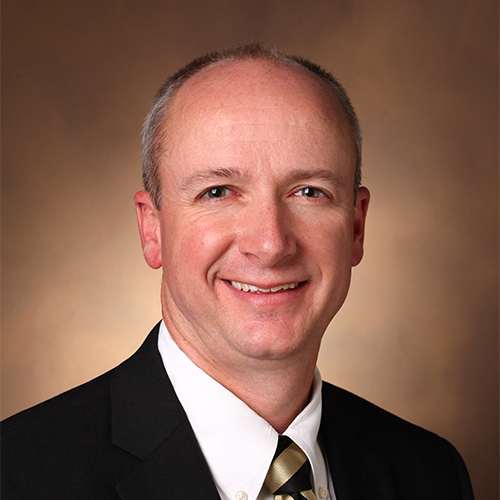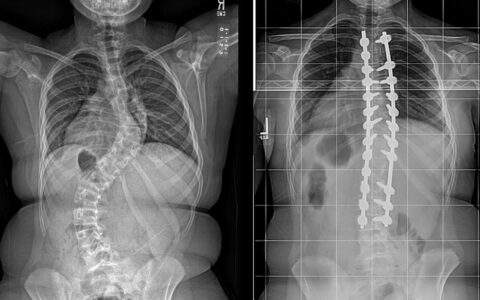Robert “Warne” Fitch’s dual training in emergency medicine and orthopaedics mirrors the comprehensive nature of athletics management today. More than ever, sports medicine specialists wear multiple hats. Fitch describes this trend as well as innovations and events that are fundamentally altering the field.
Broader Umbrellas and Safety Nets
Discoveries: What aspects of how athletes are trained and supported today would you not have envisioned 10-20 years ago?
Fitch: This profession used to be one where you hung out on the sidelines waiting for someone to get hurt. We didn’t have a proactive or preventative mindset. We’ve gone from treating bumps and bruises and injuries to creating a multifaceted umbrella of care that includes concussion, cardiac health, nutrition and mental health.
Increasingly, we are looking at our athletes in an individualized way and designing training, nutrition and rehab around not only the sport, but around the athletes themselves. Technology and research have both made a huge contribution to this shift.
“Increasingly, we are looking at our athletes in an individualized way and designing training, nutrition and rehab around not only the sport, but around the athletes themselves.”
Operationally, the different groups providing medical care have broader skills and oversight and more seamless coordination. For example, my dual background in emergency medicine and orthopaedics enables me to both assess an orthopaedic injury on the sidelines and also triage the athlete. That way, there isn’t a lag between field assessment, transfer to the ED or getting them to the right specialist for definitive care.
We cross-train the on-field paramedics with our athletic trainers and doctors. We also involve directors of the EMS and Vanderbilt LifeFlight so that we all have the same protocols and policies. In the unfortunate event something emergent happens on the field, we all know what each other is going to do.
Discoveries: What are some of the preventative measures that are helping athletes perform optimally?
Fitch: In injury prevention, I think there’s better cross-understanding between the medical side of things and the sports training side. Athletic trainers, strength coaches and nutritionists are working together, using functional assessments to identify abnormalities and risk factors before injuries manifest. This is a huge factor in minimizing risk and preventing injury.
Technology is enabling our strength and conditioning coaches to monitor the athlete’s workload. Our athletes wear GPS trackers and heart rate monitors, so we know how many steps they take, what distance they cover, and how high their heart rate gets. Instead of routinely completing a two-hour practice, a player may be pulled because they have already hit their max for the day. It also helps us monitor recovery periods and can aid in minimizing overtraining.
Discoveries: What is different today about how you help athletes recover and get back in the game?
Fitch: On the surgery side, the research component is huge, and much of it is being led by Vanderbilt. John Kuhn, M.D., Charles Cox, M.D., and Rick Wright, M.D., our orthopaedics’ chairman, are all part of the MOON/MARS Project, a multi-institutional partnership to answer questions about best approaches to sports injuries. The project currently manages the largest ACL study completed to date and has developed surgical and rehab protocols for ACL injuries. The project has also expanded to study rotator cuff tears.
In rehab, physical therapy and athletic trainers have much more evidence today on how athletes recover and how to modify training accordingly. New technology tells us when an athlete has recovered sufficiently to be back in the game.
Then, obviously, assessment and recovery from concussion has been a major focus. We started the Vanderbilt Sports Concussion Center several years ago, and now this group publishes 15-20 articles a year.
Concussion Vigilance
Discoveries: Can you tell me more about that? How has the research and NCAA oversight on concussion influenced Vanderbilt’s approach?
Fitch: Concussion has certainly changed a lot in my career. We went from initially identifying and watching them to the very strict protocols in use today. The NCAA now requires everyone to have a concussion plan submitted and approved every year. We must include how we are going to educate athletes and staff, how we are going to diagnosis it, and what tools we are going to use for recovery.
We’re working hard to understand how to minimize concussions, but also on how to effectively recover athletes and minimize risks moving forward. The diagnosis and return to play protocols have become more standardized, from the international level all the way down to youth sports. Now we immediately pull the player out, test them, recover them and use a graded and monitored progression back into play.
“We’re working hard to understand how to minimize concussions, but also on how to effectively recover athletes and minimize risks moving forward.”
It is now everyone’s responsibility to monitor for concussions – the players, the coaches, the athletic training staff. There’s even a whistleblower policy requiring teammates to step up and say if they think someone has signs and symptoms.
At the NFL, NHL, MLS and NCAA/SEC level, there are concussion spotters. On gameday in football, there are spotters in the crowd that call down to the sideline if they see a hit on the field that looks concerning for concussion.
At the same time, some of the fears need to be reined in. What is in the media and what makes the headlines may not actually have a lot of science behind it. I’m proud of the Vanderbilt Sports Concussion Center because they are getting out there and saying, “This is what’s being said, this is what we know is accurate and not accurate, this is what we need to learn more about.”
The Whole Student-Athlete
Discoveries: You have mentioned nutrition and mental health as components of an individualized program for today’s athlete. What does that support look like at Vanderbilt?
Fitch: Nutrition and hydration are what fuel the body during training and recovery. We know now that athletes in different sports and in different positions have varying needs for muscle mass and size, as well as endurance. An endurance runner needs a different balanced diet of proteins, carbohydrates and fats than someone playing offensive line. They may also have to eat smaller, more frequent meals. Timing and composition of meals before competition is different from the type of meals eaten after exercise.
In football, particularly, muscle loss over a season is not uncommon, so we have to ensure the athlete’s diet is modified to meet the changing performance demands.
We have recently researched some of the specific nutritional deficits common in athletes. As one example, we are finding a fair number of our athletes have vitamin D deficiency, so we address that up front, right when they arrive as freshmen on campus.
Mental health is a real priority for us today and we are aggressively trying to prevent, identify and treat it. These athletes are under a great deal of stress from a rigorous academic load and training and competing at the highest level. Plus, their sleep patterns are irregular because they are college students.
We recognize these athletes are at risk for anxiety, depression and substance abuse.
At all levels of sports, performance anxiety is commonly an issue. “I need to make this free throw or this field goal. It’s what I do, but I’m nervous about it, I’m nauseated and my heart is racing.” We’ve traditionally focused on the muscle side of things, the performance side of things, but now we understand we need to include the mental component as well.





